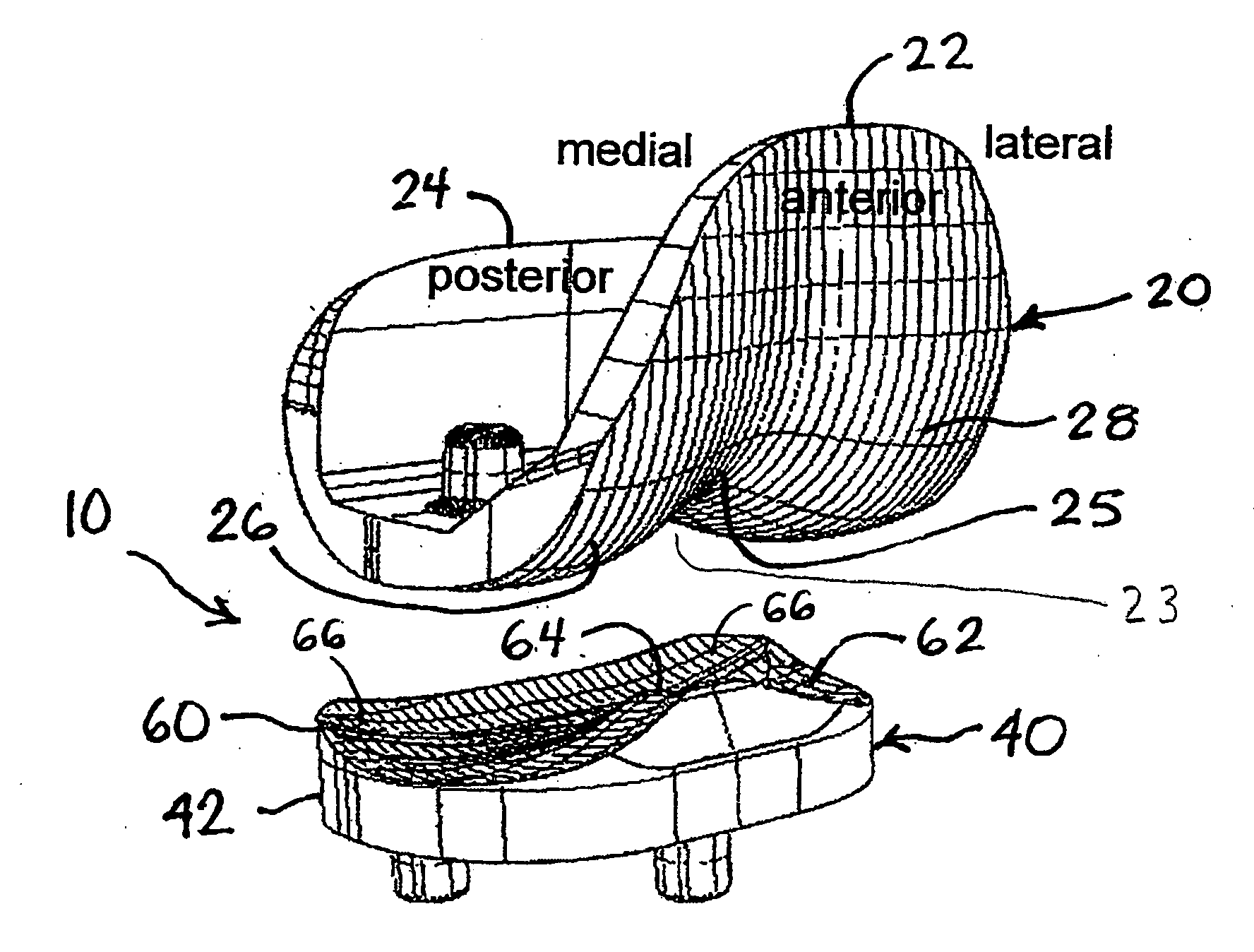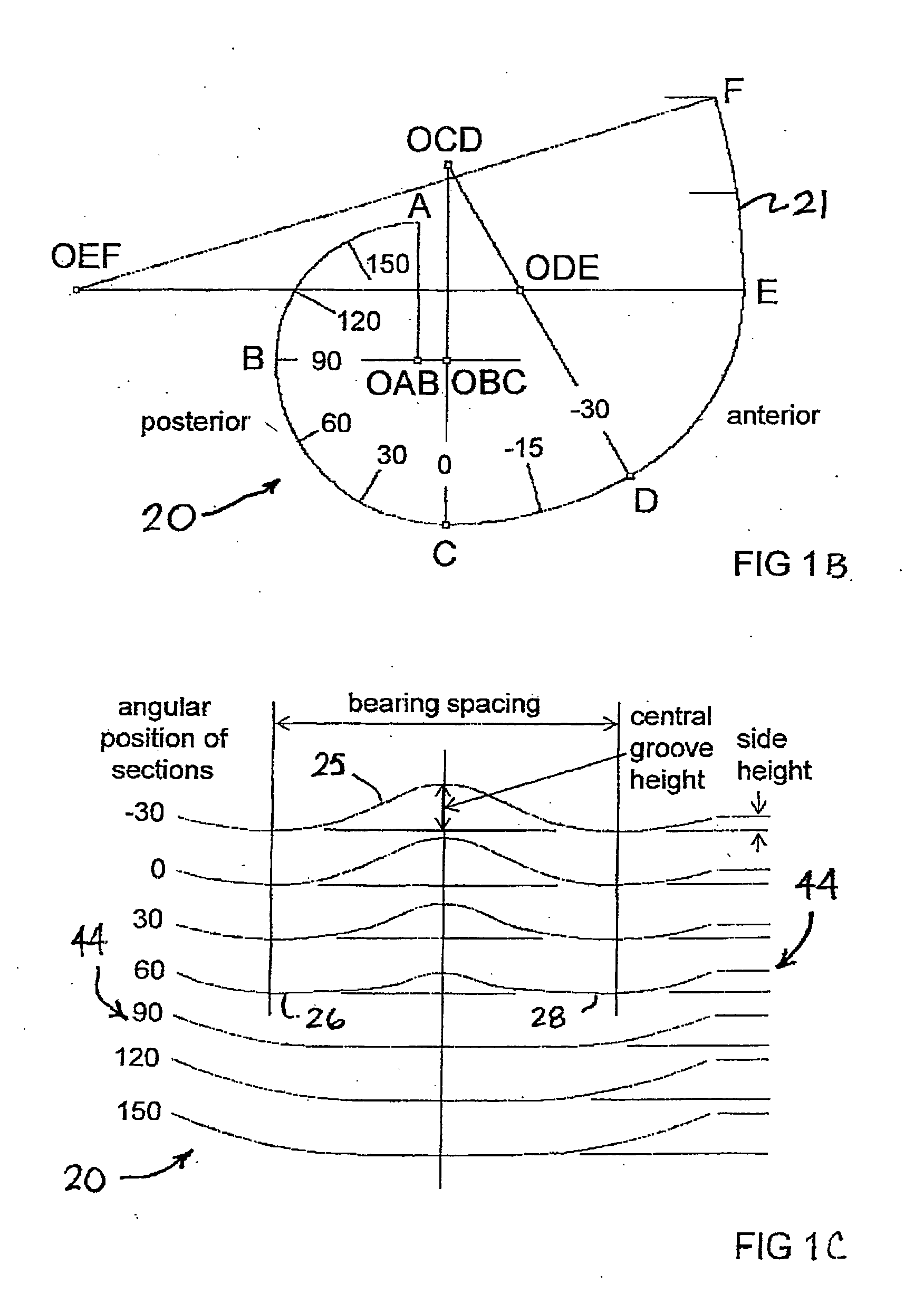Surface guided knee replacement
a knee joint and surface guided technology, applied in the field of knee prosthesis, can solve the problems of still needed rotational laxity, and achieve the effects of high flexion, high flexion, and large contact area
- Summary
- Abstract
- Description
- Claims
- Application Information
AI Technical Summary
Benefits of technology
Problems solved by technology
Method used
Image
Examples
Embodiment Construction
[0038] Referring to FIG. 1A, a surface guided knee replacement 10 is shown in a position of approximately zero degrees flexion and includes a femoral component 20 and a tibial component 40. Femoral component 20 connects to a shaped distal end of a femur. In the embodiment shown, the tibial component 40 is one-piece, but can also be a bearing component fixed into a tibial tray or baseplate. The tibial component 40 connects to a shaped proximal end of a tibia and includes a bearing surface 62 that receives and guides the flexion of femoral component 20.
[0039] Femoral component 20 has a proximal-anterior portion 22 and an opposed proximal-posterior portion 24 that define an arcuate curve. Component 20 includes an intercondylar surface 25 that connects a medial condyle 26 and a lateral condyle 28. Intercondylar surface or patella groove 25 defines a recess or notch that has a depth that progressively diminishes from the proximal-anterior portion 22 to the proximal-posterior portion 24....
PUM
 Login to View More
Login to View More Abstract
Description
Claims
Application Information
 Login to View More
Login to View More - R&D
- Intellectual Property
- Life Sciences
- Materials
- Tech Scout
- Unparalleled Data Quality
- Higher Quality Content
- 60% Fewer Hallucinations
Browse by: Latest US Patents, China's latest patents, Technical Efficacy Thesaurus, Application Domain, Technology Topic, Popular Technical Reports.
© 2025 PatSnap. All rights reserved.Legal|Privacy policy|Modern Slavery Act Transparency Statement|Sitemap|About US| Contact US: help@patsnap.com



